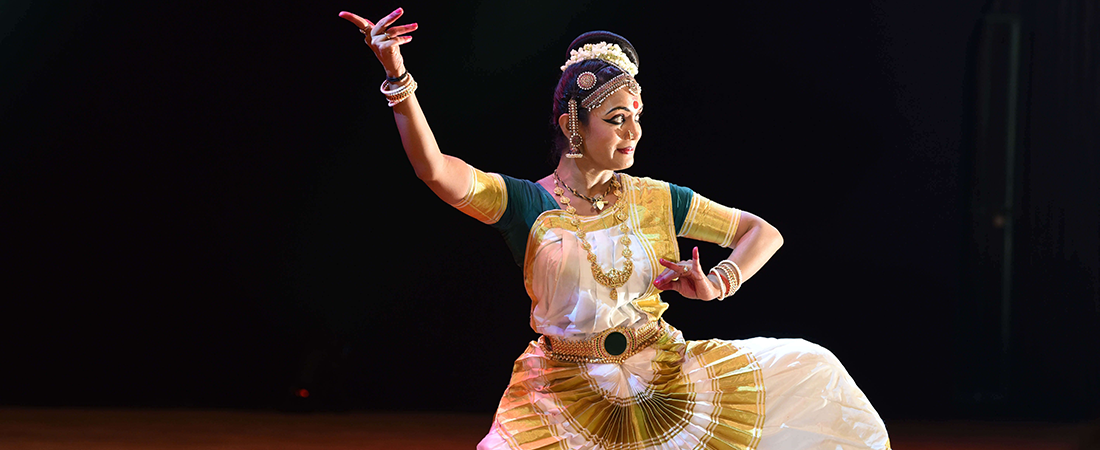Mohiniyattam: Elegance in Every Step, Grace in Every Expression.

Mohiniyattam is a captivating blend of grace, expressiveness, and storytelling that originated in the scenic state of Kerala in South India. It is a classical dance form. Mohiniyattam, which translates to "Dance of the Enchantress," exquisitely embodies its name by portraying the performer as a celestial enchantress who uses subtle facial expressions and movements to tell tales and evoke feelings.
Lyrical in nature, Mohiniyattam is characterized by flowing motions, swaying gestures, and intricate footwork. The traditional white and gold costumes of the dancers are complemented visually appealing jewelry. The dance style usually starts with an invocation and works its way up to more intricate pieces that display technical mastery and poignant narrative.
Classical Carnatic music is played in tandem with the dance, resulting in a tasteful blend of melody and rhythm. The elegant motions are complemented by traditional instruments like the flute, mridangam, and veena, which add to the overall visual experience. The stories are given depth by the expressive use of abhinaya (facial expressions), eye movements, and mudras (hand gestures), which are frequently influenced by Hindu mythology and folklore.
Mohiniyattam is significant to the local culture and spirituality in addition to its artistic value. The intricacies of the dance are taught to dancers through intense training, guaranteeing a fluid fusion of style and grace. Over time, the dance style has changed, incorporating modern elements while maintaining its fundamentally classical qualities.